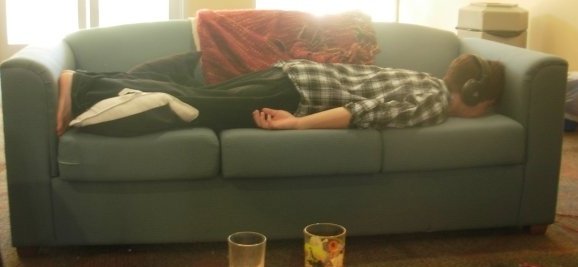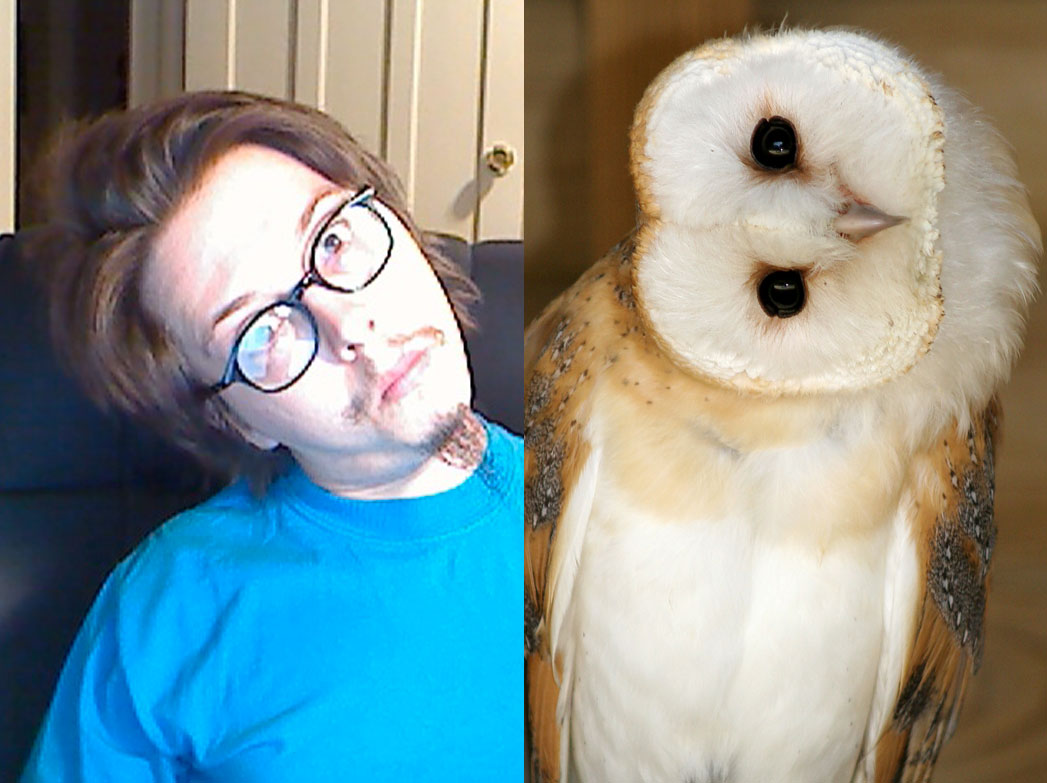
In the Spring semester of my third year of college I had a stats class that really took the life out of me. One day I elected to take a brief nap in a dorm lounge. The picture above was taken shortly after I laid down, and subsequently posted on Facebook. Out of context, it appears as though I am planking– an internet meme in which individuals are photographed intentionally laying face-down in strange places. It has popped in an out of the global media for almost a decade but resurfaced over this summer into a world-wide activity. It has since inspired similar activities including owling, Batmanning, and stocking. I will refer to the entire trend collectively as “performative memes.” Unlike Anthropology Major Fox or lolcatz, these memes are about performing a certain embodied act, not producing an image for visual consumption. All around the world, friends are taking pictures of each other doing strange stunts and posting them on the internet. What exactly are we doing –socially- when we engage in performative internet memes?
Even though I am laying facedown, and someone has photographed me, I am not engaged in planking. I have not defined my activity as planking, (it wasn’t even called planking in 2008) and I did not intend to share this activity with anyone else (even though the photographer did). And even if I were planking, it would be a relatively unimpressive instance of planking, since many of the most popular occur in strange and dangerous places. So dangerous in fact, that one young man in Australia died after falling seven stories in an attempt to plank on the ledge of a balcony.What is it about this activity that compels individuals to risk arrest, injury, or even death? Certainly there is the usual dose of bravado that goes with any kind of intentionally public stunt. The possibility of internet fame has also been known to encourage questionable behavior, but neither danger nor fame fully explains the sheer number and variety of individual efforts. If danger and fame were the only motivating factors, new posts on the planking Facebook page would get increasingly more dangerous and outlandish. Instead, we get multiple instances of planking at weddings, planking in store aisles, and a wide range of planking-related media. There is a spoof movie trailer, a touchdown plank, and even t-shirts.
What sort of theory can we bring to bear to describe performative memes? Chris Kelty, in his book Two Bits, concludes that free software communities form something called a “recursive public.” A recursive public is a group that is organized to create the very means by which it constitutes itself. Free software makers make free software so that they can use the source code to communicate and make more free software. Planking does not create the means by which one shares their planking activities, but it does create the context in which the activity gains meaning. By participating in performative memes we show others that we are a part of the same international community. By engaging in performative memes, participants constitute a social imaginary that gives meaning and context to the actions of subsequent and existing participants. When someone goes owling in an art museum, I might owl in a natural history museum and post my picture as a response. We are communicating a shared idea, and we derive pleasure from the shared experience. More than just a shot at internet fame or recognition (although that is a motivating factor), performative memes are a way to nonverbally communicate a shared cultural practice. In hopes that I may reflexively push performative memes in the direction of recursive publics, I submit for the internet’s approval my attempt at stocking with a photo of an owl:


Comments 13
nathanjurgenson — September 26, 2011
cool post!
i think “performative memes” is a terrific and understudied topic. though, the term 'performative' brings Butler to mind, and i do not think you mean the term as such. perhaps "performance" is better? not sure...
you state, “these memes are about performing a certain embodied act, not producing an image for visual consumption”
can you elaborate? that seems false to me, planking would not exist if were not for its documentation potential; you do it for it to be photographed. it is an action that would not exist without the camera, right?
in fact, i think this brings up a larger point: what actions exist only because of online documentation? these performed memes seem like obvious examples. others?
Planking — November 12, 2011
Memes are here to stay in a big way. They dominate top web sites like reddit and 4chan, and honestly they are funny and apeal to so many people. Except for planking i hope that disappears forever.
Internet Memes: The Mythology of Augmented Society » Cyborgology — December 6, 2011
[...] have explored the internet meme in interesting ways. Most notably, David Banks analyzed the performative meme, arguing for its function in cultural cohesion, and P J Rey delineated the political and strategic [...]
Internet Memes: The Mythology of Augmented Society » OWNI.eu, News, Augmented — December 13, 2011
[...] have explored the Internet meme in interesting ways. Most notably, David Banks analyzed the performative meme, arguing for its function in cultural cohesion, and PJ Rey delineated the political and strategic [...]
Our Emotional Attachment to Interfaces » Cyborgology — June 1, 2012
[...] and wide open public spaces. We give product reviews to each other, share family photos, and tell jokes to each other. When the interfaces that mediate these social activities change, it is a jarring [...]
#Eastwooding: Participatory Political Satire » Cyborgology — September 1, 2012
[...] three examples depict the usual permutations of, what I have termed, performative internet memes. The permutations are the result of friendly competition among twitter users who want a brief [...]
Speaking in Memes « n a t h a n j u r g e n s o n — October 30, 2012
[...] Hess also noted that it is difficult for the candidates to manufacture virality. Instead, meme politics often actively resist the campaigns’ intentions. The memes that proliferate, on and offline, are not what any of the campaigns planned. Obama gave “Romnesia” a hard sell but failed to spark a fire. Perhaps the most successful intentional meme was Obama’s reference of “bayonets” in the final debate, though even this did not proliferate like the others. Instead, after major political events, what goes most viral are not the zingers carefully constructed by teams of hired writers. Mitt Romney likely had no clue that “Big Bird” or “binders” would not only get attention but would generate Twitter accounts with tens of thousands of followers, Tumblrs with thousands of reblogs, and countless Facebook updates, as well as dominate the blogosphere and mainstream political reporting the next morning. When Clint Eastwood made a speech to an invisible Obama in an empty chair, it was not Obama’s advisers that created the @invisibleobama Twitter account or theEastwooding performative Internet meme. [...]
#Standingman: The Meme for the Masses » Cyborgology — June 18, 2013
[...] man is believed to be Erdem Gündüz, a well known Turkish performance artist who has inspired a performative internet meme that has already made it around the globe. (There’s a nice Storify here. Thanks to [...]
The Civic Beat: World Report » #Standingman: The Meme for the Masses — June 25, 2013
[...] man is believed to be Erdem Gündüz, a well known Turkish performance artist who has inspired a performative internet meme that has already made it around the globe. (There’s a nice Storify here. Thanks [...]
#Trayvonning and Thinking Through Populist Technologies » Cyborgology — July 20, 2013
[...] mention of it. I thought it would be disingenuous of me to write a post for just about every other (1, 2, 3) performative internet meme without mentioning this disgusting bit of racism. #Trayvonning [...]
The Civic Beat Reader #Standingman: The Meme for the Masses — October 2, 2013
[...] man is believed to be Erdem Gündüz, a well known Turkish performance artist who has inspired a performative internet meme that has already made it around the globe. (There’s a nice Storify here. Thanks [...]
#Standingman: The Meme for the Masses | David A Banks — March 6, 2014
[…] to be Erdem Gündüz, a well known Turkish performance artist who has inspired a performative internet meme that has already made it around the globe. (There’s a nice Storify here. Thanks […]
“The Cuckoo”: Chaos and performative memes » Cyborgology — April 17, 2014
[…] especially through speculative fiction. And, among other things, it’s about communication and performative memes. It’s also about how those memes, when they gain sufficient cultural power, alter social […]